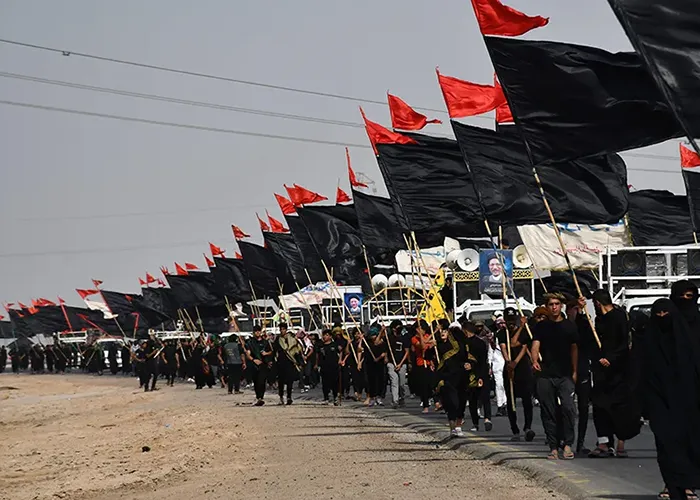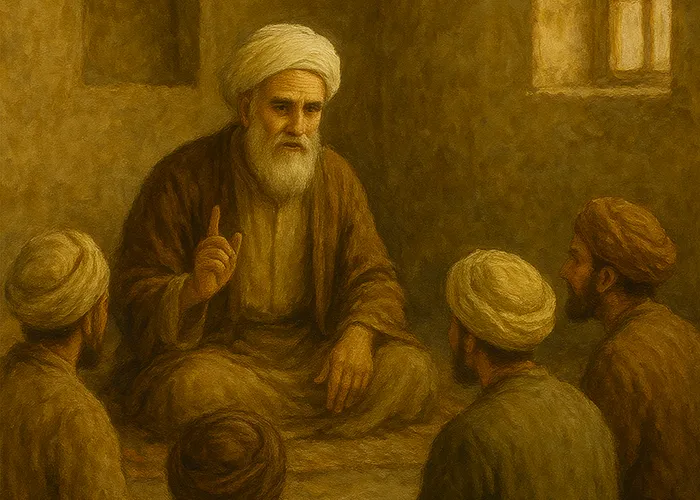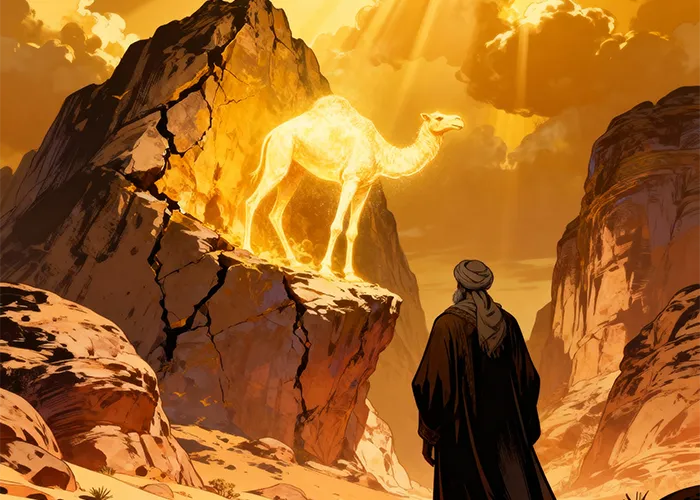Topic of the Week – Volume02 Issue32
Arbaeen: A Monumental Step Toward Building a Global Community
Seyed Hashem Moosavi
Introduction
Each year, as the day of Arbaeen approaches, the roads leading to the city of Karbala witness one of the world’s largest and most extraordinary religious gatherings. Millions of pilgrims, from diverse nations, ethnicities, languages, and even religious backgrounds, converge on a single destination, united by a single call: “Labbayk Ya Husayn” (“At your service, O Husayn”).
At first glance, this monumental movement may appear to be a purely religious or ritualistic gathering. Yet upon deeper reflection, it reveals itself as a living manifestation of Islam’s profound capacity to forge a global community. In a world increasingly fractured by individualism, extreme nationalism, and widening cultural and political divides, the Arbaeen pilgrimage is a unique phenomenon that powerfully embodies transnational solidarity, compassion, brotherhood, selflessness, mutual support, and the pursuit of justice.
This article seeks to explore the role of Arbaeen in the process of Islamic nation-building, drawing upon both religious sources and contemporary social realities. It aims to offer a thoughtful analysis of this extraordinary phenomenon and propose practical pathways for harnessing its potential in a purposeful and transformative way.
- The Concept of the Ummah in the Qur’an and Sunnah
The Holy Qur’an refers numerous times to the concept of ummah (community), outlining its defining characteristics. An ummah is not merely a human gathering or an ethnic identity; rather, it is a collective bound together by shared faith, purpose, ethics, and allegiance (wilāyah). As the Qur’an declares «إِنَّ هذِهِ أُمَّتُكُمْ أُمَّةً واحِدَةً وَأَنَا رَبُّكُمْ فَاعْبُدُونِ؛ “Indeed, this community of yours is one community, and I am your Lord, so worship Me.[1].”
This verse underscores the unity and divine orientation that lie at the heart of the Islamic conception of community.
In the life of the Prophet Muhammad (peace and blessings be upon him and his family), the formation of the Islamic ummah in Medina stands as a shining example of community-building grounded in faith, justice, migration, brotherhood, and divinely guided leadership (wilāyah). This prophetic model was later deeply connected to the movement of Imam Husayn (peace be upon him), for the uprising of Karbala was, at its core, an effort to preserve the spirit of the ummah and restore it to the path of the Prophet.
- The Arbaeen Pilgrimage: A Manifestation of Transnational and Grassroots Unity
The Arbaeen pilgrimage, with its millions of participants, possesses unique characteristics that set it apart from other religious traditions and rituals. Among its most striking features are:
- National and Religious Diversity: Arbaeen pilgrims represent a vibrant mosaic of humanity from dozens of countries worldwide. From Shia Muslims in Iran, Iraq, Lebanon, and Pakistan, to Sunni Muslims, Christians, and even non-Muslims who are drawn to the spiritual depth and moral force of the occasion, this gathering transcends borders, sects, and creeds.
- Grassroots in Nature: Unlike many large-scale religious gatherings that governments or formal institutions orchestrate, Arbaeen is a purely grassroots and volunteer-driven movement. The mawkib hosts, those offering food and services, the caretakers, and even some aspects of security along the route are all provided by ordinary people acting out of love and devotion.
- Cultural Border lessness: Along the pilgrimage route, distinctions of race, language, and socioeconomic status dissolve. Clad in the simple garments of a pilgrim, with dusty shoes and purified hearts, all walk toward Karbala side by side.
These features echo the qualities of the Islamic ummah as described in the Qur’an, an ummah in which cooperation, compassion, self-sacrifice, and brotherhood replace selfishness and division.
- A Rehearsal for the Mahdawi Community
Some contemporary Islamic thinkers regard the Arbaeen pilgrimage as a form of social rehearsal for the emergence of the awaited Mahdawi society, a just and spiritually awakened global community under the leadership of the promised saviour, Imam al-Mahdi (may God hasten his reappearance). In such a society:
- Collective participation is widespread and carried out with a sense of responsibility;
- Service to others is rendered selflessly and without expectation of reward;
- Political and geographic borders pose no obstacle to human solidarity;
- A shared goal of justice, divinely guided leadership (wilāyah), and truth-seeking unites the people.
From this perspective, Arbaeen is not only a commemoration of Ashura but also a spiritual and societal preparation for the return of divine justice and the fulfilment of Islam’s ultimate vision for humanity.
- Opportunities and Challenges
Opportunities
The great Arbaeen pilgrimage goes beyond purely religious; it is a multidimensional phenomenon with strategic potential for the Muslim world and particularly for the global Shia community. Some of these key opportunities include:
1) Cultivating a Global Shia Identity
- Rejecting Artificial Borders: Within the spiritual atmosphere of Arbaeen, young Muslims realise that their religious identity transcends national boundaries and geographical divisions. Through this shared experience, they actively witness the unity of the Islamic ummah and internalise the concept of a divinely united community (ummah wāḥidah ilāhiyyah) as superior to ethnic or nationalist categorisations.
- Resisting Identity Erosion: In the face of Western-driven globalisation and its homogenising cultural forces, Arbaeen functions as a powerful counter-identity mechanism. It reinforces and affirms religious values in the minds of the younger generation, serving as a form of resistance against cultural dilution.
- Intergenerational Transmission: This mass movement, with its diverse structures and communal rituals, such as multi-lingual elegies and mourning traditions, facilitates the organic transmission of core values like martyrdom, self-sacrifice, and resistance across generations.
2) Faith-Based Cultural Diplomacy
- Grassroots Diplomacy: The voluntary participation of millions, independent of state sponsorship, creates a powerful sense of organic legitimacy. This “authentic credibility” is difficult for hostile media outlets to distort or dismiss.
- A Model of Peaceful Coexistence: The interactions between pilgrims and religious minorities along the route, including Christian participants from around the world, offer a living testimony to Islam’s capacity for fostering global peace and interfaith harmony.
- A Counter-Narrative to Media Powers: The prominent presence of women, many of whom wear the hijab and play active roles in organising and managing mawakib (pilgrim service stations), directly challenges prevailing stereotypes of Muslim women as oppressed or excluded from public life.
- Authentic Image-Making: The significant presence of non-Muslim observers and media outlets throughout the pilgrimage provides an unparalleled opportunity to showcase Islam’s true face and the rich moral and spiritual culture of the Ahl al-Bayt (peace be upon them).
3) Human and Religious Network-Building
- Transnational Social Capital: The deep bonds between individuals during the pilgrimage lay the groundwork for long-term transnational and interfaith cooperation. These human connections create a grassroots infrastructure for future collaboration during crises, such as natural disasters, conflict zones, or humanitarian emergencies.
- People-Led International Organisations: Volunteer service institutions that support pilgrims, such as the Mawakib, have the potential to evolve into permanent humanitarian organisations capable of sustained collaboration and coordinated charitable efforts across borders.
4) Social Training and Grassroots Governance
- A Living School of Altruism: Volunteering in acts of service, such as assisting ill pilgrims or cleaning public spaces, serves as practical moral training for a new generation grounded in responsibility and selflessness.
- A Model for Crisis Management: The effective organisation of millions of participants without reliance on a centralised authority showcases the viability and efficiency of people-driven management on a large scale.
- Strengthening Social Resilience: Enduring the journey’s hardships fosters a spirit of patience, endurance, and collective perseverance, key traits in building resilient communities capable of facing adversity.
5) Shaping a Global Discourse
- Redefining Soft Power: Arbaeen has become a symbol of Shia soft power, rooted not in coercion or domination, but in cultural and spiritual attraction. It presents an alternative model of influence grounded in moral authority and communal solidarity.
- A Channel for Conveying the Message of Karbala: Core values such as opposition to cruelty (qisāwat-sitīzī) and resistance to oppression (ẓulm-sūzī) are communicated to global audiences through powerful symbols, banners, chants, and imagery, making Arbaeen a platform for moral messaging in the international media landscape.
Challenges
Despite its immense spiritual and strategic potential, the Arbaeen pilgrimage also faces serious challenges. If left unaddressed, these issues may undermine many of this global movement’s golden opportunities.
1) Media Misrepresentation and the Battle of Narratives
- Deliberate Politicisation: Some international media outlets attempt to portray Arbaeen as a political or sectarian demonstration, reducing it to a tool of regional politics driven by a particular state, rather than acknowledging its grassroots and transnational nature.
- Spiritual Distortion: The profound moral and spiritual message of Ashura is sometimes misrepresented, reduced to an expression of “religious violence” in reports that wrongly interpret mourning rituals as incitement to hatred.
- Neglect of Human Dimensions: The significant participation of non-Muslims, for example, doctors offering free medical services to pilgrims, is often ignored, thereby obscuring the movement’s inclusive and humanitarian essence.
2) Sectarian Exploitation and Extremism
- Deviant Movements: Certain extremist or Takfiri groups attempt to exploit the pilgrimage environment to promote anti-religious or divisive ideologies, spreading doubts and sectarian rhetoric among unsuspecting pilgrims.
- Ethnic Chauvinism: When national Mawakib (such as those representing a specific country) are used to assert ethnic superiority rather than to serve all pilgrims equally, the spirit of unity and humility is compromised.
- Commercialisation of Rituals: The rise of luxury markets can undermine the spiritual ambience of Arbaeen, where religious devotion is overshadowed by excessive materialism in accommodation, hospitality, and merchandise targeted at pilgrims.
3) Weakness in Cultural and Intellectual Leadership
- Ritual without Understanding: Repeating rituals without a deep grasp of the philosophy of shahādah (martyrdom) in the Husayni tradition risks reducing powerful acts of remembrance to empty formalities.
- Lack of Discourse Platforms: There is a noticeable absence of structured, international platforms where Shia scholars and intellectuals can engage in critical dialogue about the challenges facing the Islamic ummah in the modern world.
- Subtle Cultural Infiltration: Under the guise of “convergence,” some pilgrims uncritically adopt non-religious or inappropriate behaviours observed among others, leading to an erosion of values rather than meaningful unity.
Strategic Conclusion
Arbaeen is a living laboratory of Islamic civilisation. By combining managerial rationality (through large-scale organisation) with spiritual emotion (tears and devotion) and linking personal piety (individual ziyārah) with structured collective action (mass pilgrimage), it offers an unparalleled model for the civilizational renewal of the Islamic ummah.
We must engage in transnational planning centred on grassroots institutions and cultural thought leaders to harness their full potential. It is our responsibility to recognise this divine opportunity, protect it from distortion, and transmit the message of Arbaeen to the world through media, education, and cultural outreach.
It is a message that flows from the depths of the heart and extends toward the horizon of the awaited unified ummah.
[1]. (Surat al-Anbiya, 21:92)
editor's pick
news via inbox
Subscribe to the newsletter.




